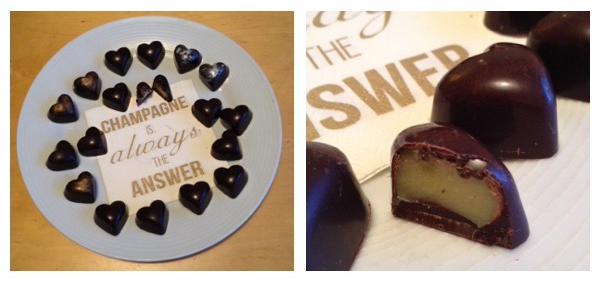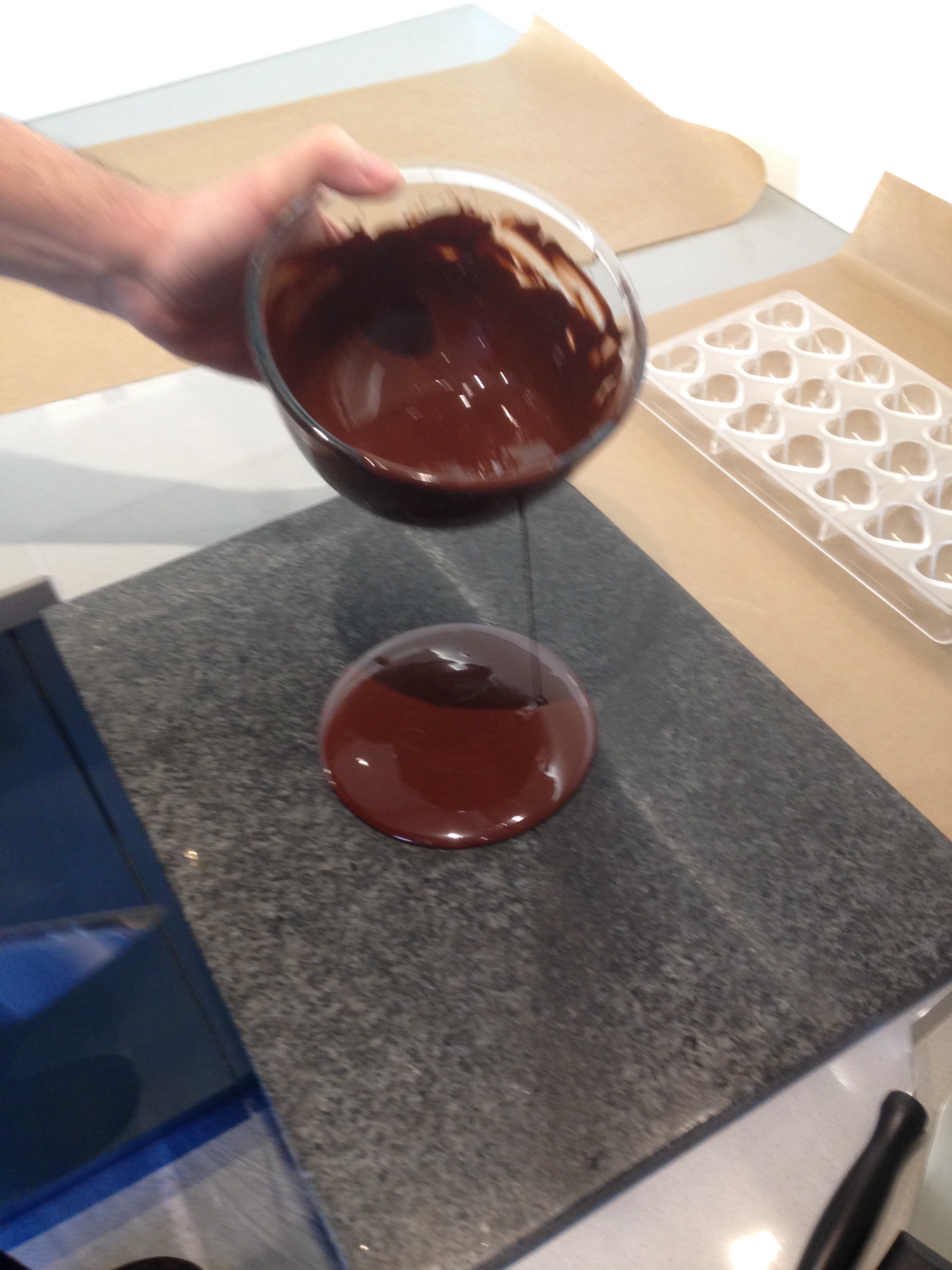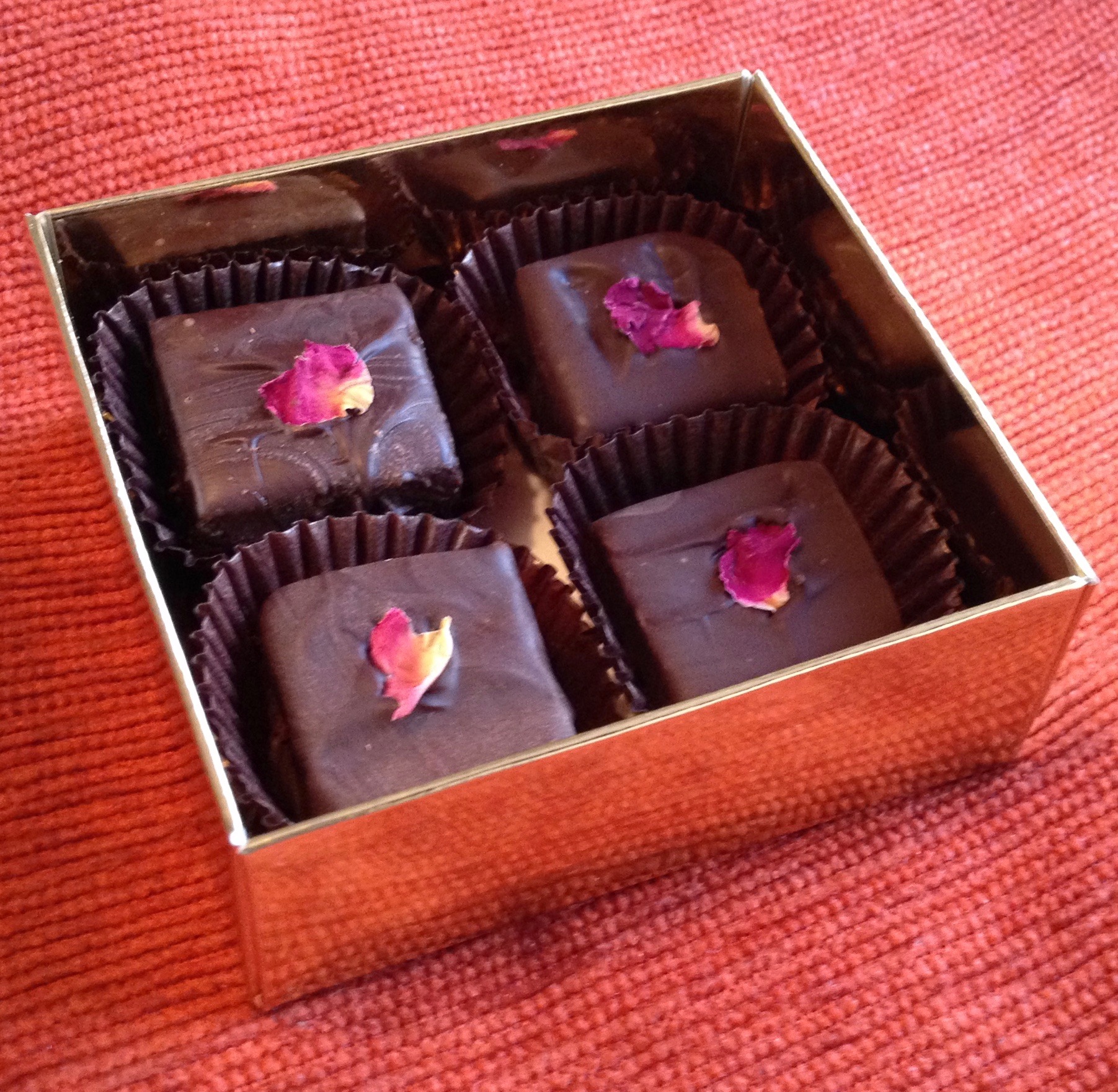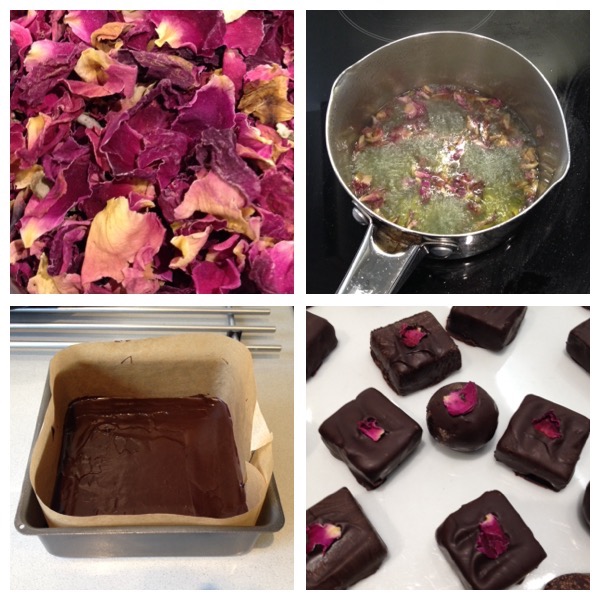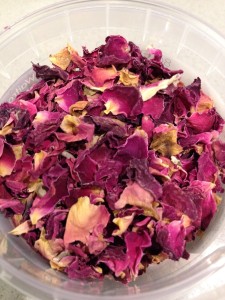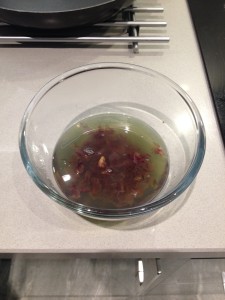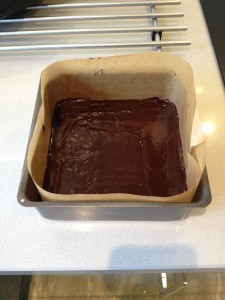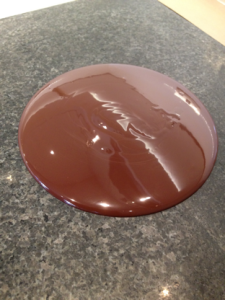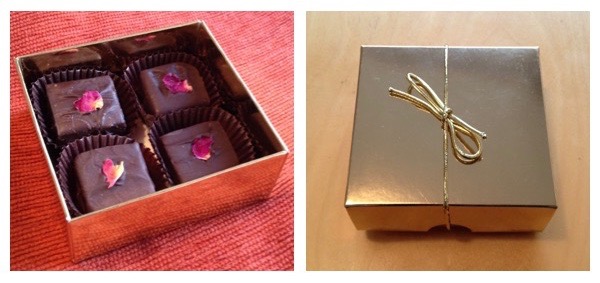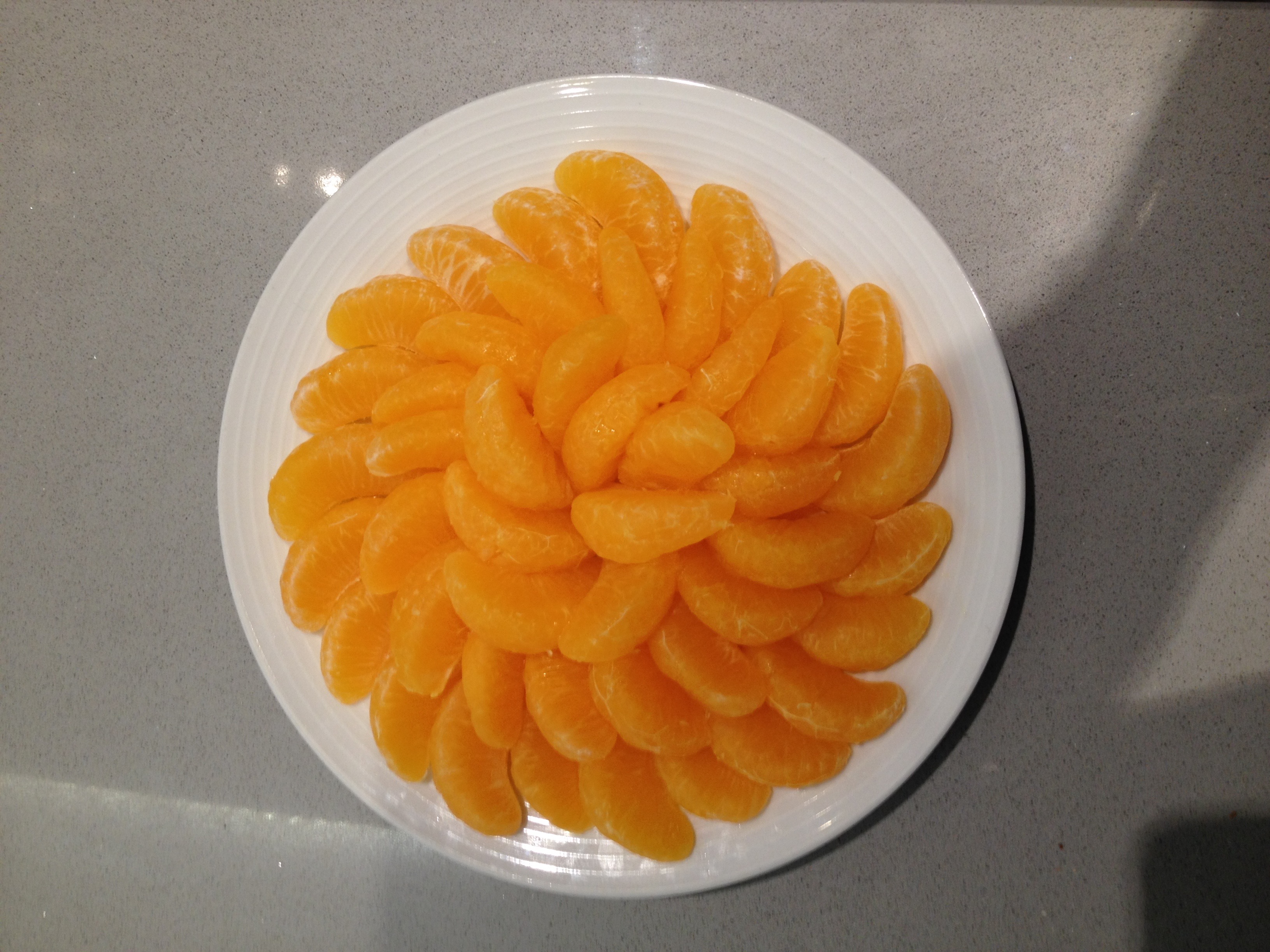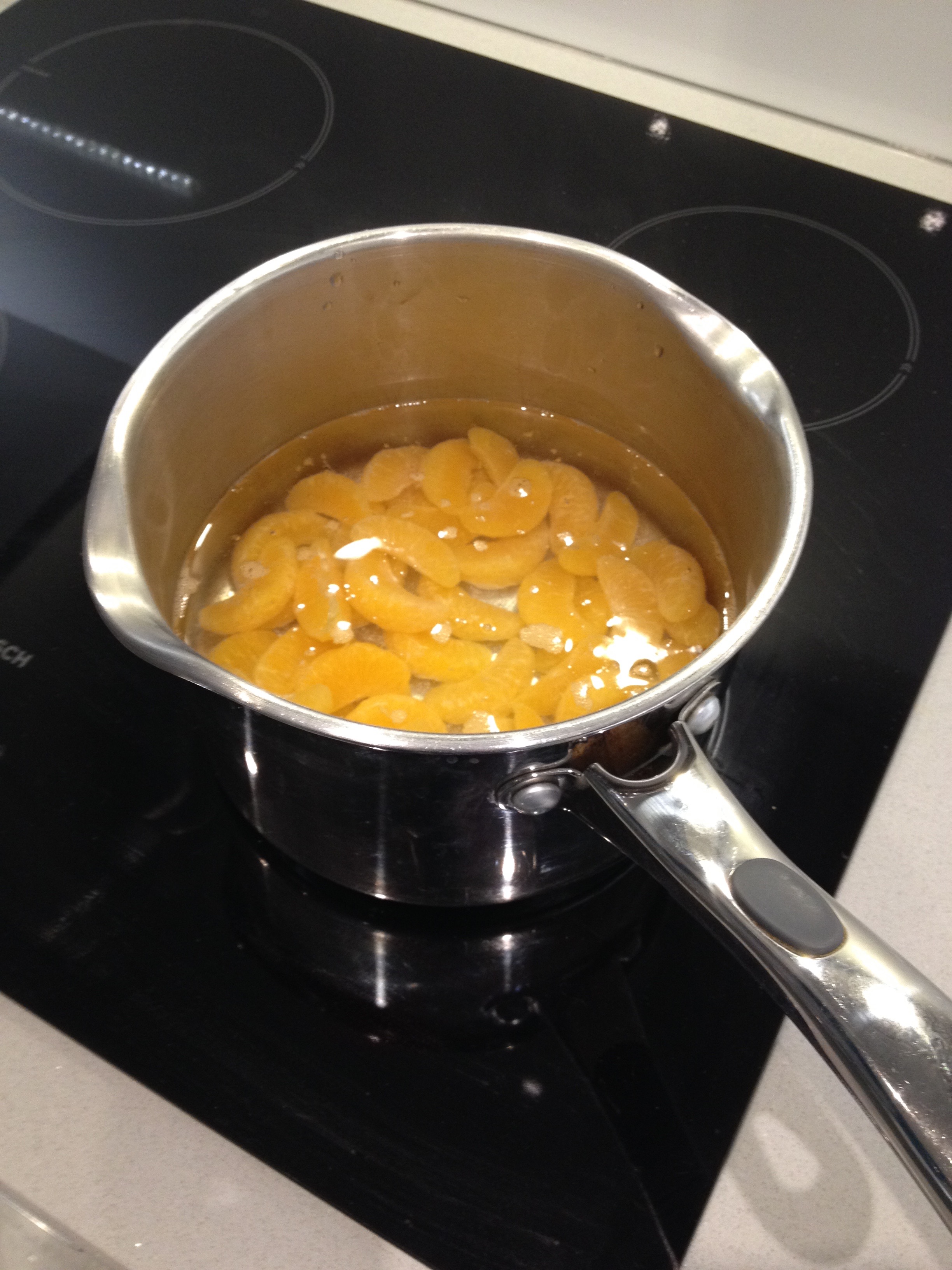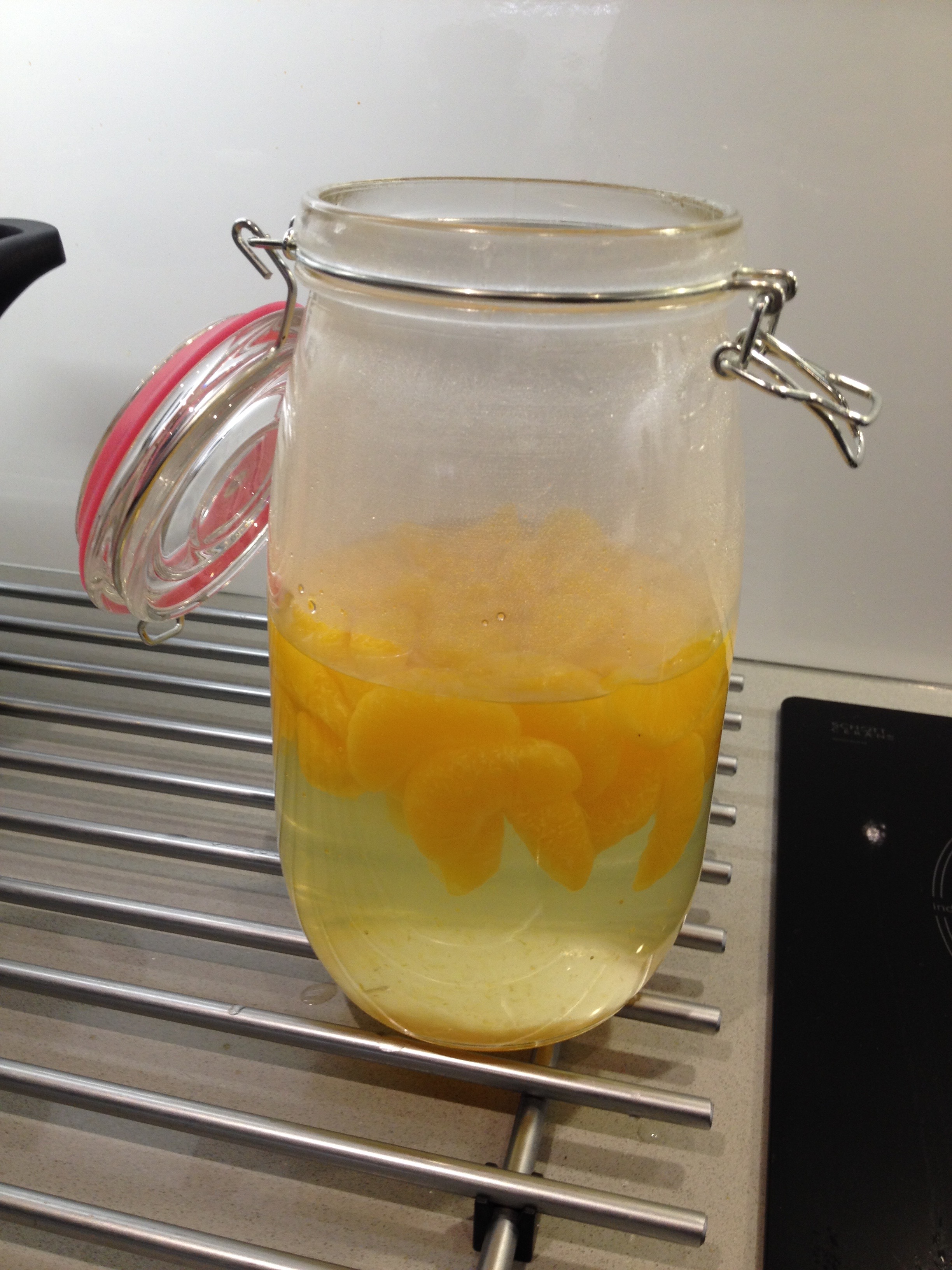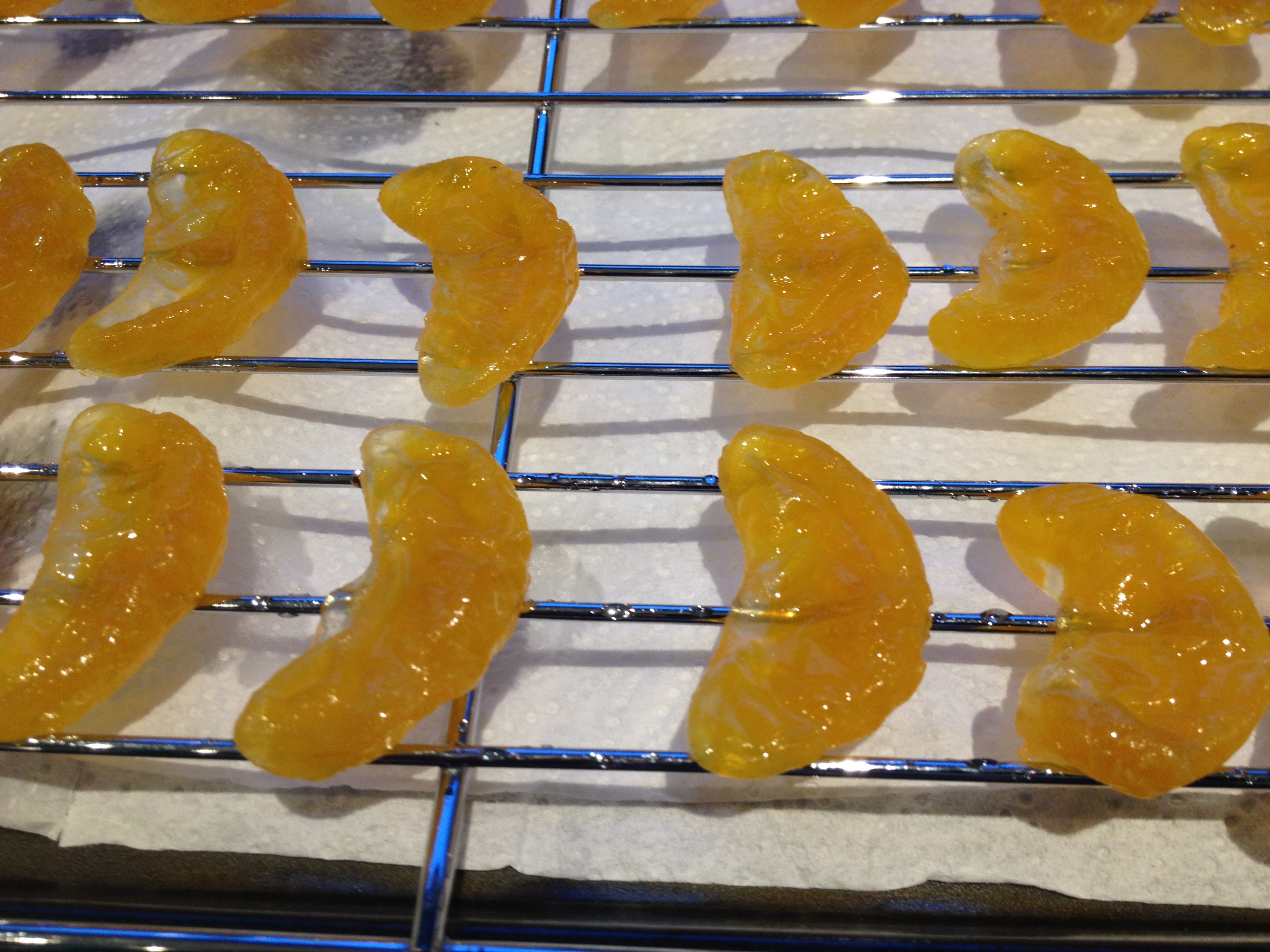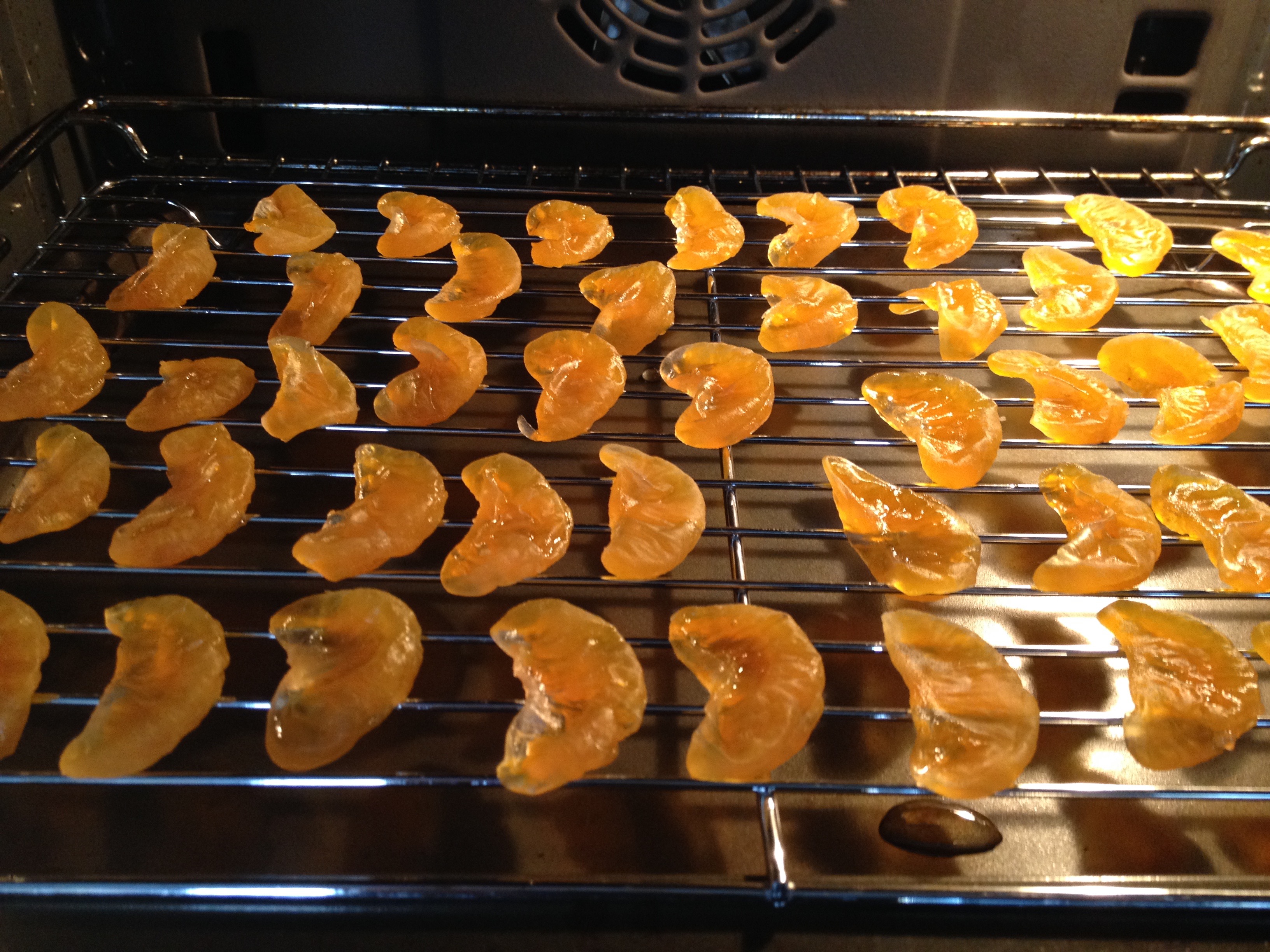Rhubarb & Ginger Ganache …… now that’s a very good combination of flavours!
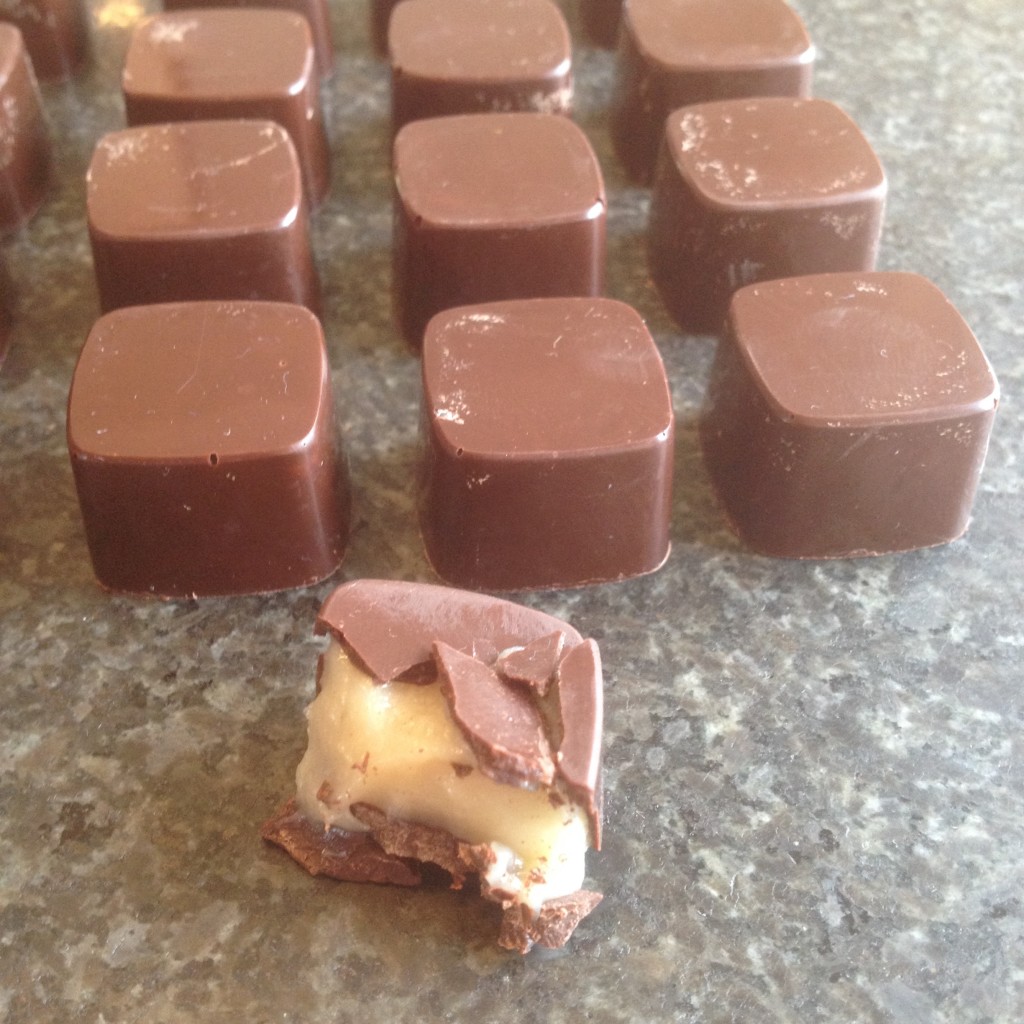
- I had been looking for ways to create a rhubarb & ginger ganache with an intense but smooth flavour. As spring is almost here in England and new season Yorkshire rhubarb available in the shops it was a good time to try to perfect a recipe.
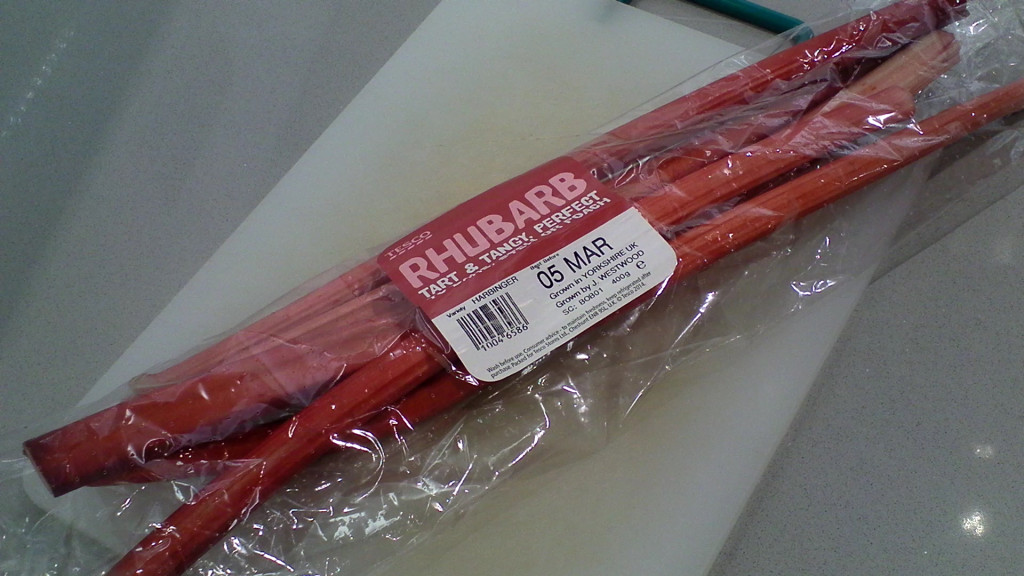
- I decided that I would first make a rhubarb infused sugar syrup adding a small amount of finely chopped stem ginger to give a little gingery pep. Stem ginger is the best option as it’s already in sugar syrup and confit so will blend vey well into the finished ganache. I reserved some of the finely chopped stem ginger to stir into the ganache at the end.
- I chose organic white chocolate for the ganache base so that it would be smooth and light in colour. I used dark tempered chocolate (70%) and square shaped moulds for these chocolates as this would contrast very well with the ganache. The only improvement I would make is to slightly increase the amount of rhubarb to intensify the taste more. However the rhubarb & ginger ganache I made was very smooth and with just the right amount of ginger. It’s a very seasonal chocolate and if you have some fresh young rhubarb it’s definitely worth a try.
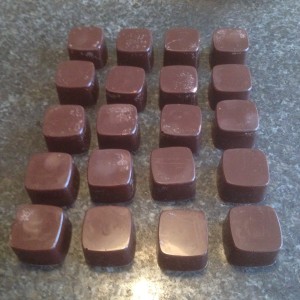
-
Rhubarb & Ginger Ganache
(makes approx 30)
-
Ingredients:-
- 1 ½ Sticks of Rhubarb (fresh new season if possible).
- 2 rounds of Stem Ginger (sold in jars with syrup)
- 75ml Double Cream (or Heavy Cream).
- 35g White Caster Sugar.
- 255g Organic White Chocolate (Green & Black)
- 150g 70% Dark Chocolate finely chopped (Green & Black).
- 60 ml (¼ Cup) Corn Syrup to stop crystallisation of the ganache.
-
Equipment:-
- Square Shaped Polycarbonate Moulds (Lakeland).
- Chocolate tempering thermometer (Lakeland).
- Small Marble or Granite Tempering slab (Lakeland).
- Chocolate Scraper.
- 250mm long S/Steel Palette Knife.
- Piping Bag or Funnel for Filling Cases (Lakeland).
- 200mm dia Heat Proof Glass Bowl (Pyrex)
- Mixing Bowl (metal or heat proof glass)
- Small Metal Saucepan (to act as bain marie)
- Non Stick Baking Parchment.
-
Method:-
- 1 Temper 150g of dark chocolate. This gives the finished chocolate its distinctive snap and shine.
- For method please press on this link temper.
- 2 Spoon the dark chocolate into the square shaped mould until each aperture is filled. Then tap the side of the mould 2 or 3 times to release any air bubbles. Next angle the mould over the bowl of chocolate and use the scrapper to pour to the bowl and smooth off the top of the mould. Turn the mould face down on a piece of non stick baking parchment for 15 minutes. Scrape the face and sides of the mould and place into a refrigerator for a further 15 minutes. This is so the individual chocolates will release easily from the moulds. Then leave covered on the worktop awaiting the ganache filling.
- 3 Place 255g of the white chocolate which has been broken into small squares or finely chopped into a mixing bowl.
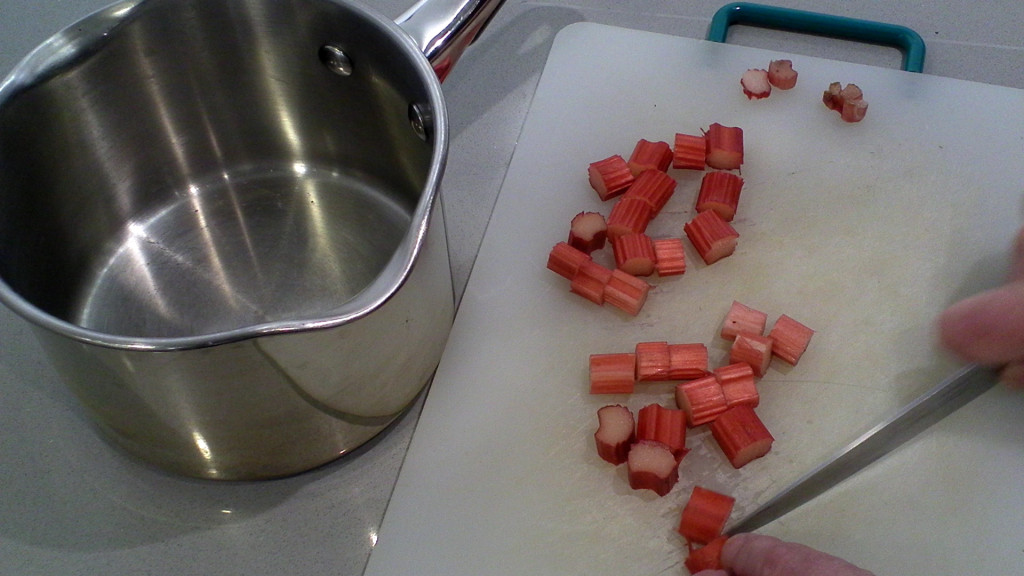
- 4 Wash the rhubarb and cut into 30mm lengths. Add to saucepan with 175ml of water, 35g of white caster sugar, 1 ½ rounds of finely chopped stem ginger and ¼ cup (60ml) of corn syrup. Gently heat and simmer for 10 minutes ,stiring occasionaly until the rhubarb is tender. Then take off the heat and allow to stand for 30 minutes to infuse.
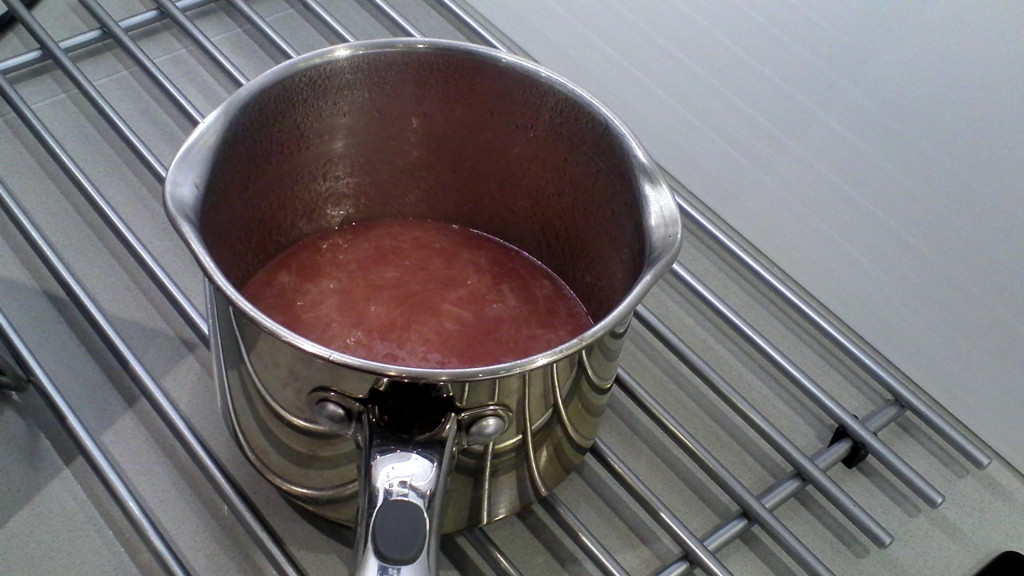
- 5 After 30 minutes blend the rhubarb and ginger syrup (with a stick blender) until it forms a smooth coulis like mixture. It will have a wonderful pink colour.
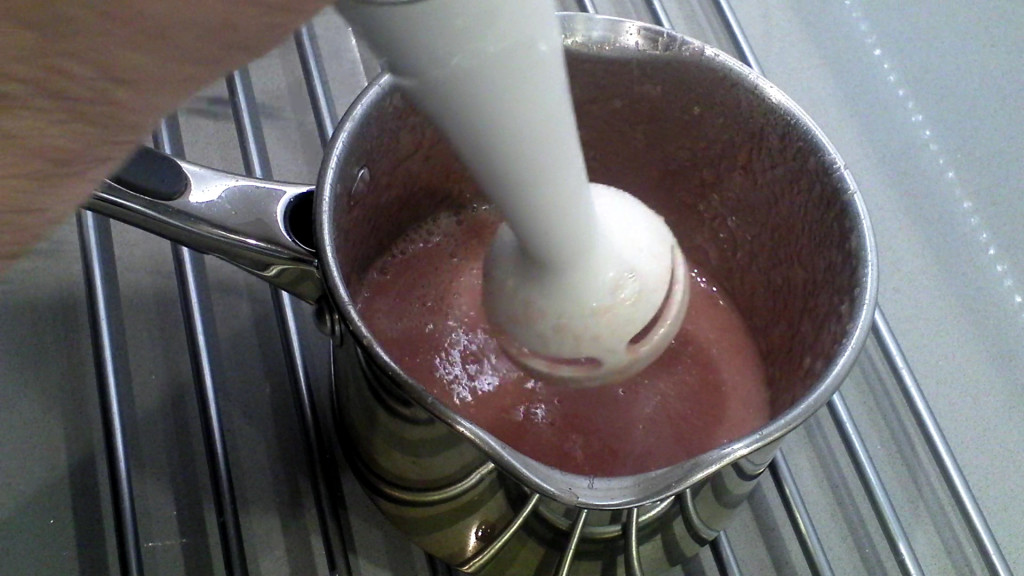
- 6 Stir in 75ml double cream (or heavy cream) and bring the pan back to the stove and reheat gently until it reaches boiling point.
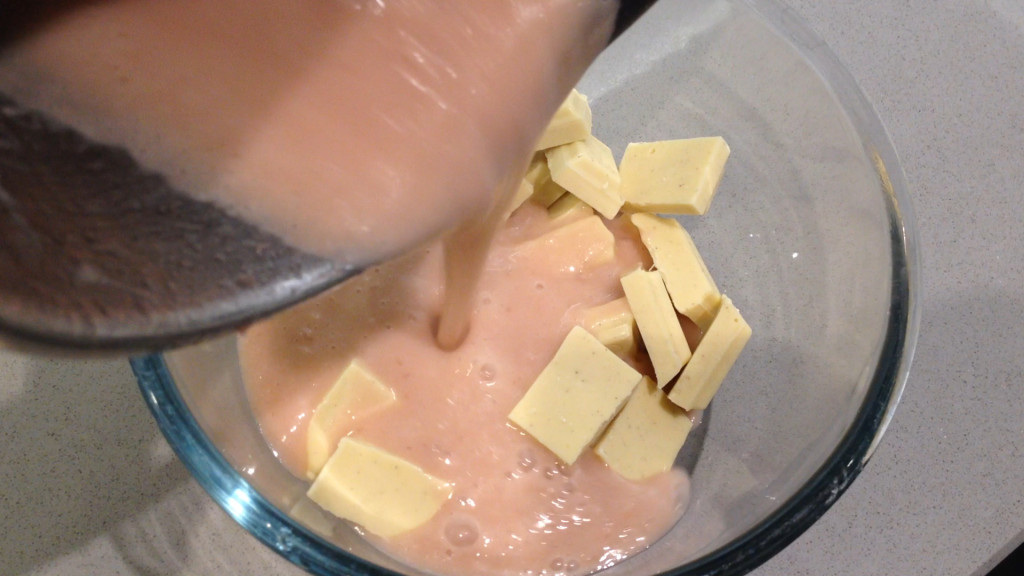
- 7 Now pour the rhubarb and ginger cream mixture over the white chocolate pieces in the mixing bowl. Leave for a few minutes for the chocolate to begin to melt, then stir or gently whisk until it emulsifies and a silky smooth ganache forms. Cover and stand for 1 to 2 hours allowing to cool to around 27 deg C. Check from time to time as the ganache will cool down and thicken quite quickly depending on your general kitchen temperature.
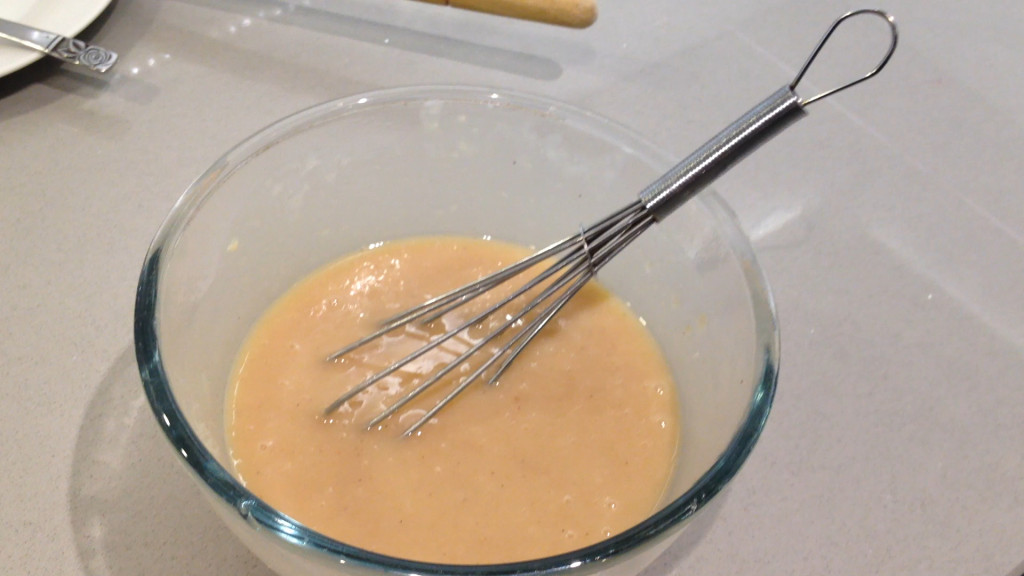
- 8 Spoon the ganache into a piping bag or use a chocolate filling funnel. Now pipe or funnel the ganache carefully into the moulds. Ensure the filling is at least 2 mm below the rim of each heart shaped aperture to allow for the chocolate capping.
- 9 Now for capping off of the chocolates. Temper some dark chocolate and then spoon gently into each heart aperture then level off mould using a palette knife. Set the mould down on a worktop and leave for 20 to 30 minutes to set.
- 10 Once the chocolate has set, turn over the mould and place on a piece of non stick baking parchment. Now tap the mould and release the chocolates. You should now have shiny glossy rhubarb & ginger ganache chocolates.
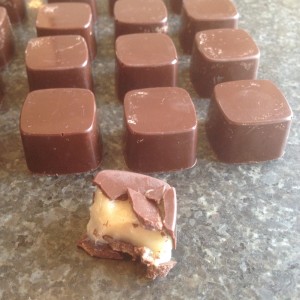

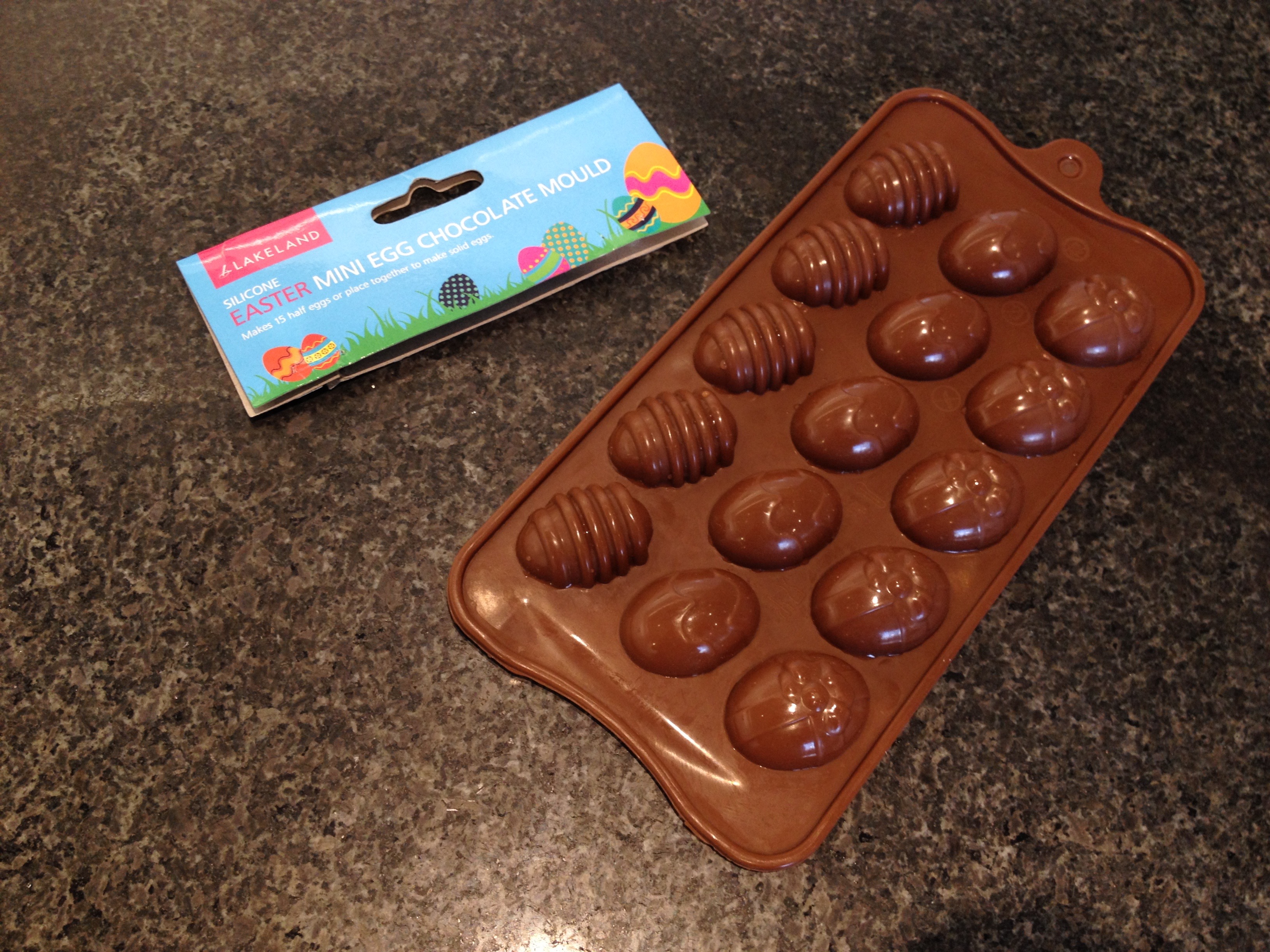 Easter Egg Chocolates Mould
Easter Egg Chocolates Mould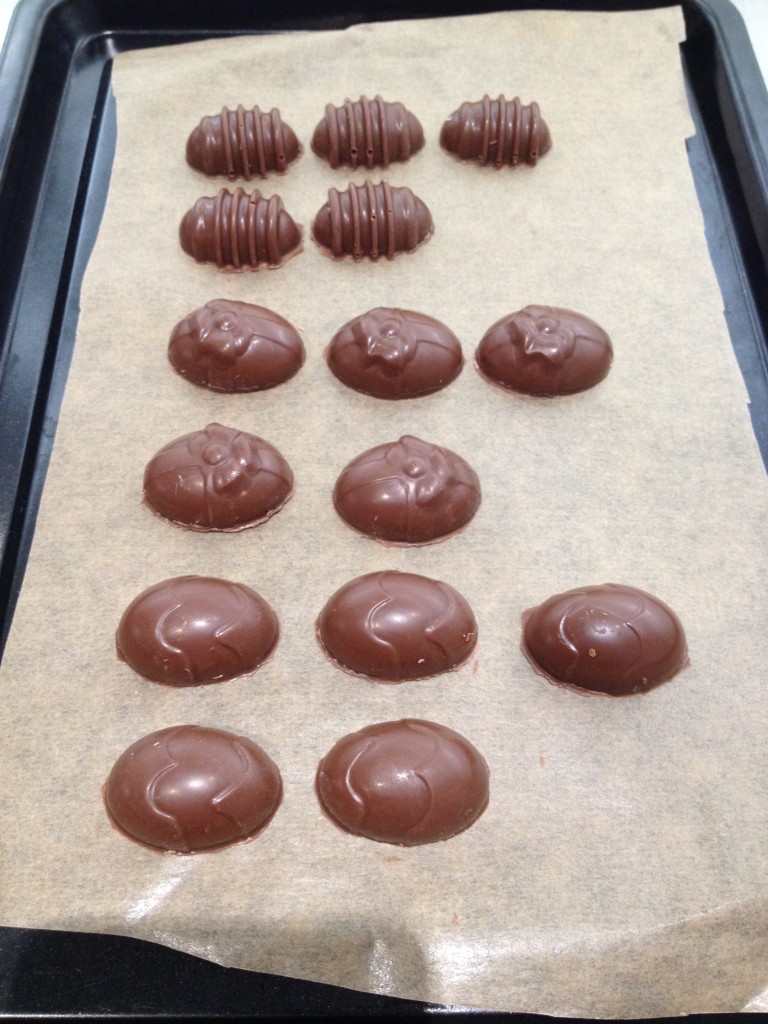 Finished Filled Easter Egg Chocolates
Finished Filled Easter Egg Chocolates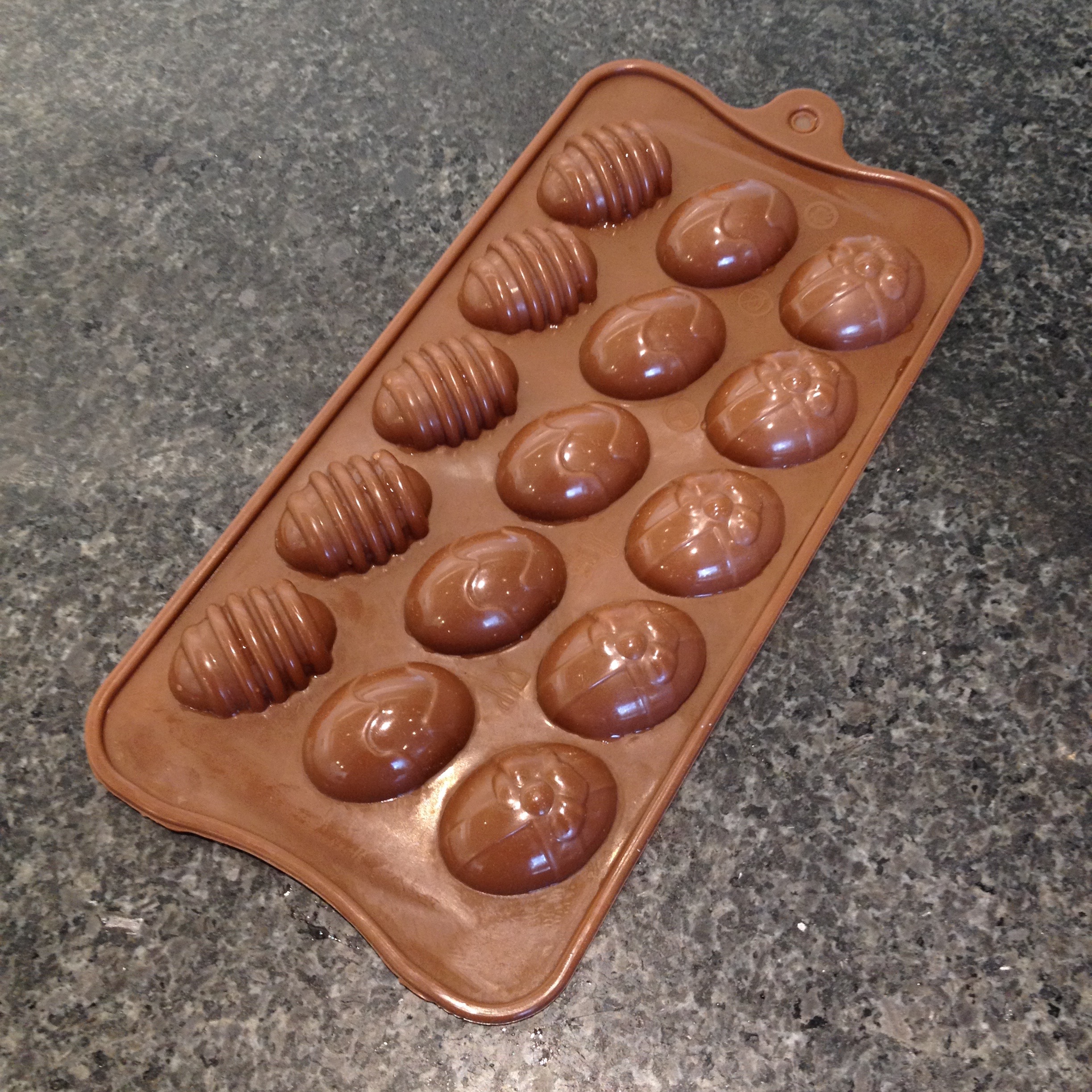 Easter Egg Chocolates Mould
Easter Egg Chocolates Mould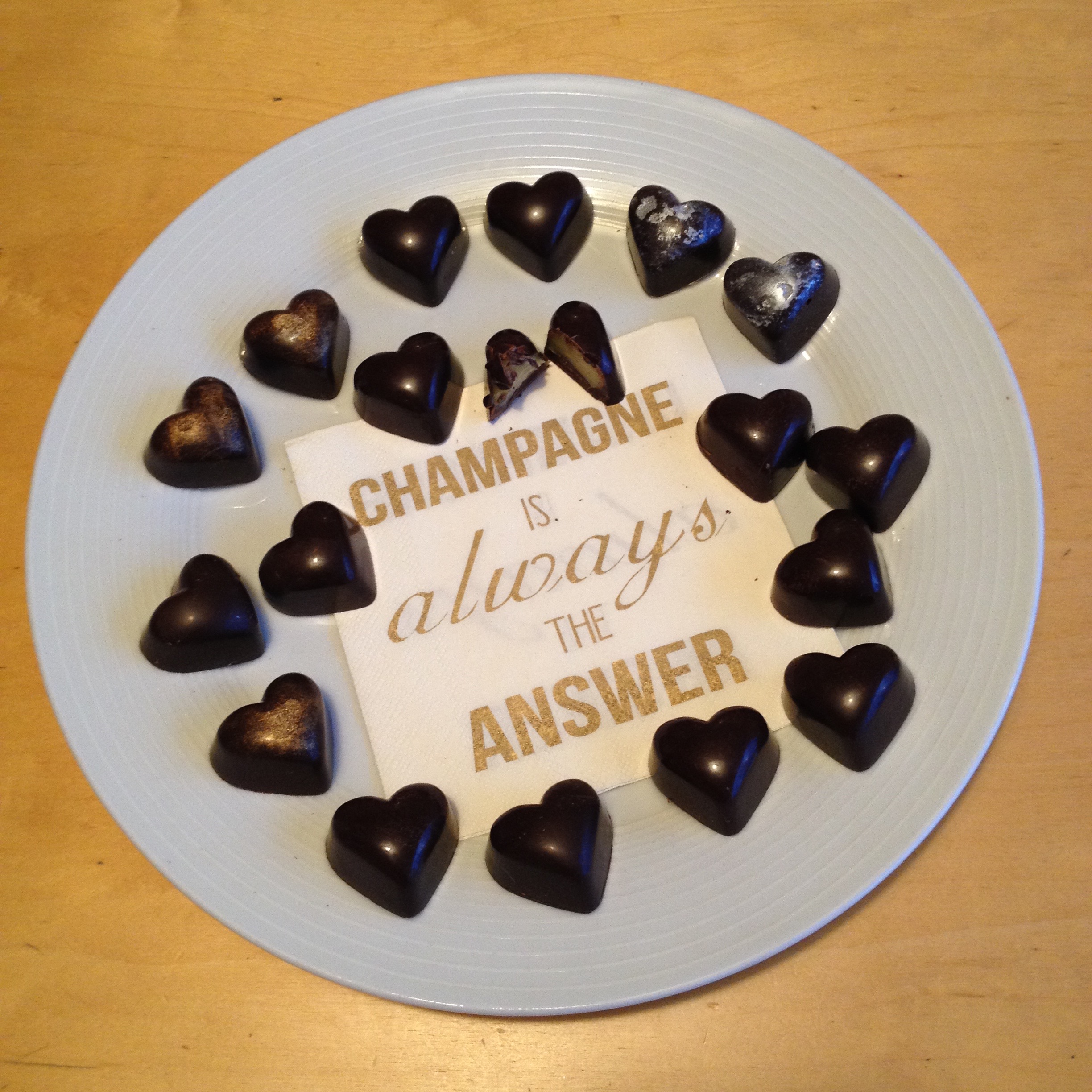
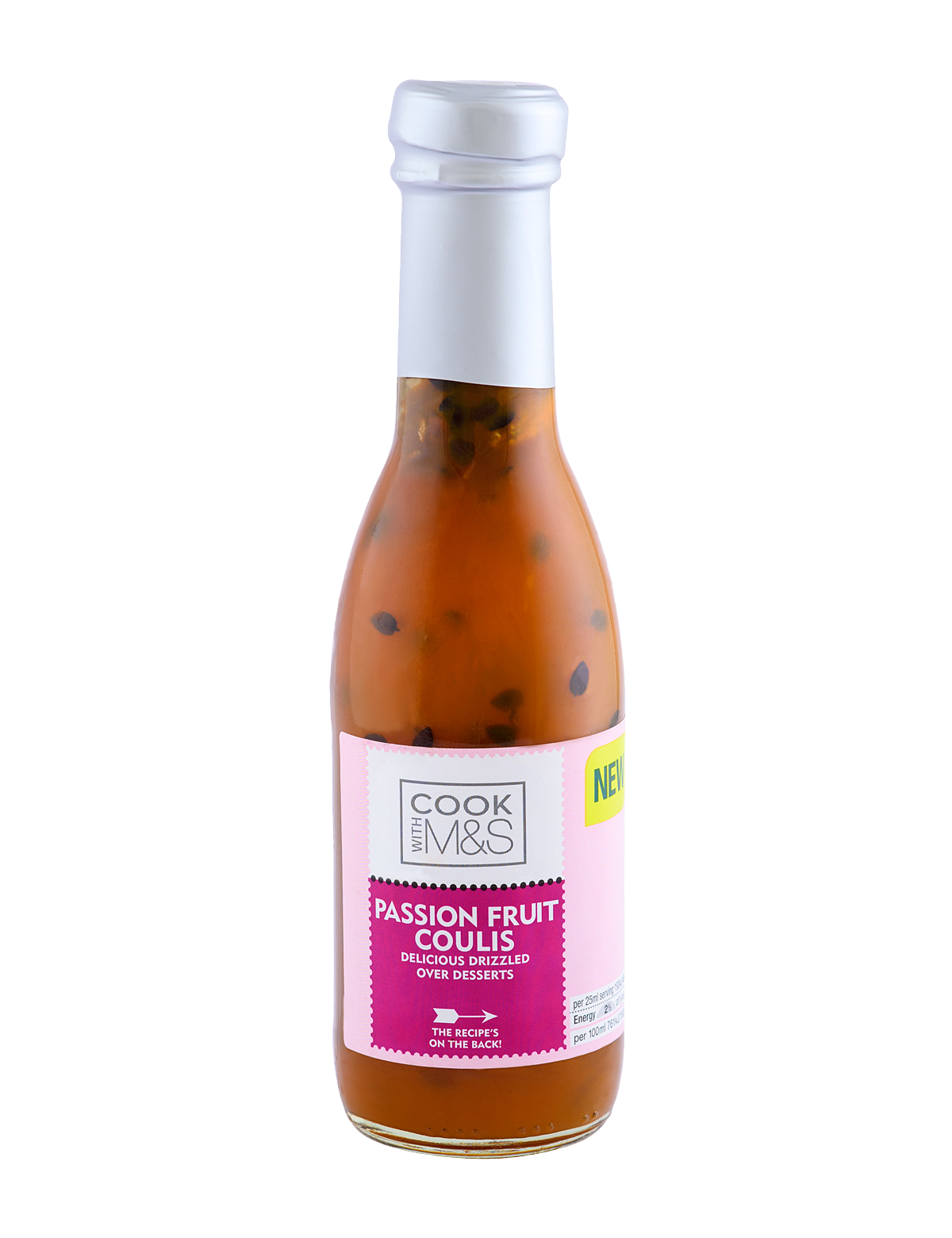 Image © M&S
Image © M&S